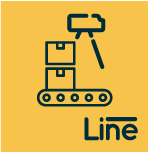Talking about the new normality in the logistics sector implies mentioning the strategic consumer, as we have decided to name the client who has become selective, analytical, demanding, cautious, and careful when buying any product or service. Due to the pandemic, this strategic consumer has changed their buying habits. Their behavior tends to be linked to distrust in the hygiene of the products they purchase and is limited by governments’ restrictions in each of the countries.
In addition to avoiding physical contact, the consumer has changed in several aspects, among which has been the increase in homes,since it is a reality that virtual purchases are the most optimal way to acquire products, migration to the suburbs is a trend, which implies an expansion in the coverage of companies, especially those related to transportation and logistics.
All this is related to what has been called the economy of low contact,which refers to the theory that studies the behavior of humans and establishes various variables that will change due to the contingency that is experienced worldwide. Given that the consumer we find before the pandemic is not the same as the one we have now, it implies that companies make changes in their logistics processes, technologies, products, and services they offer in order to adapt to the new reality.
Here we mention some of the opportunities that we as a company have detected and influence the logistics industry.
Opportunities for the logistics sector
1. We found an increase in the demand for shipments, but mainly a trend towards the atomization of shipping, much smaller packages. This has been influenced by the growth of E-Commerce implemented by the Retail companies, which were forced to exercise a mandatory change in their way of operating, from the logistics chain and sales channels available to their users.
2. Generation of experiences with the delivery of last-mile packages. It is evident that because of spending more at their homes, customers want to have their products quickly since they no longer go out looking for them. To achieve an optimal experience, logistics looks for technological toolsthat become the ally to achieve their primary objectives.
3. The arrival of autonomous vehicles. This becomes more and more a reality already, for instance, in countries like the United States these vehicles are becoming part of the logistics chain for some major transportation companies, which are beginning to test the automation of this process that was considered so manual.
As we mentioned before, there are several opportunities for the industry. However, there are also a series of challenges that must be faced in the new normality that lead companies to reinvent themselves and rethink their solutions in order to keep up with the market.
Here we mention the challenges that we found from CubiQ and that we highlight as the main ones that will influence the results obtained by logistics companies.
Challenges for the logistics sector
1. Automation in logistics is highly necessary, as the industry’s activities are sometimes very repetitive and manual. It is a sector with a high demand for labor, especially when it comes to transporting goods. That is why factors such as automation and digitalization become pillars for companies, as it is one way to optimize their operations and reduce costs..
2. Sustainability as a pillar in the processes. This trend comes from long before the contingency and is related to the environmental awareness that consumers acquire. For this reason, prior to purchasing a product or using a service, they question the impact generated by the creation of the object or the provision of the service they are providing.
3. Protocols of biosecurity and hygiene are increasingly demanding. This has implications on delivery times, given the measures that must be taken by the transporter to disinfect the vehicle. In addition to this, the personnel necessary to carry out the task of goods delivery is added. If companies manage to add technology to and automate part of the delivery processes, they can benefit from the time required to follow the protocols.
4. Optimization of economic and material resources. This is one of the objectives that the companies’ areas have, and it is a challenge that leads the managers to consider how to do more with fewer resources; especially at this moment where the operations of the companies must be maintained with a reduction of the resources, which is only possible to achieve by reducing the costs.
To face the above challenges from CubiQ, we have designed technological solutions for goods measurement that adapt to the new normality that companies are living, and that contribute to productivity and time optimization of the logistics chain, factors that become necessities nowadays.

CubiQ One OCR:
It is a mobile device (hardware and software) capable of measuring objects of any shape and type, with a limit of 150cms per edge, based on intelligence and artificial vision. Cubic, weighs, takes a photo, and transcribes the information on the label in less than 5 seconds, with an accuracy of 99% guaranteed by the NTEP.

CubiQ Line OCR:
It is a cubing system (hardware and software) with a conveyor belt capable of measuring objects of any shape and type, with a limit of 80 cms, based on intelligence and artificial vision. It cubes, weighs, takes pictures, and transcribes the label’s information in less than 5 seconds, with 99% accuracy guaranteed by NTEP. It measures between 3,000 and 4,000 packages per hour.

CubiQ go!:
Module for self-management of shipments. It allows the process of receiving goods in an automatic and innovative way without the need for customer service personnel in a fast, simple, easy, and reliable manner and provides a differentiating experience to the user.

CubiQ go mini!:
Self-service shipping module. capable of measuring objects of up to 100cms, based on intelligence and artificial vision, which will make the exact payment of the goods’ shipment according to size and weight.
Do you want to know the main success stories of the companies that are adapting to the new normality with their products?




